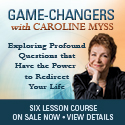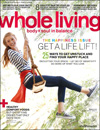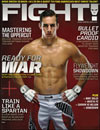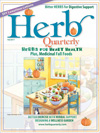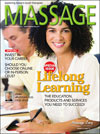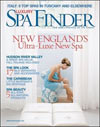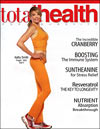By Deborah Flanagan
Editor's note: This article appeared previously at Your Tango and is republished here with the author's permission.
At least for today: Do not be angry. Do not worry. Be grateful. Work with diligence. Be kind to people. Those are the five principles of Reiki that practitioners live by. Simple advice for a better life—but it doesn't stop there. As a Reiki practitioner, I've discovered both personally and through my clients numerous ways Reiki can help with love and relationships specifically.
But first, what exactly is Reiki? You may have had a Reiki session or heard about Reiki through renowned cardiovascular surgeon, Dr. Mehmet Oz, who
recently introduced millions of viewers to Reiki, saying it was the number one alternative therapy to try.
But if not, here's a brief overview. Reiki is a hands-on healing technique from Japan and means "transcendent life force." The practice of Reiki guides this "Ki," or energy, that surrounds and permeates every living thing. Reiki enhances wellness by helping your body balance itself, and enables you to take an active role in your health.
How Meditation Led Me To True Love
As a practitioner I place my hands in various positions on or above my client, acting as a channel for the Reiki (or Ki) to move through, clearing and enhancing the energy throughout the client's body, according to what he or she needs. During sessions people often experience a deep feeling of relaxation and warmth. In addition, one of the great things about the system of Reiki is that anyone can learn to use it on themselves, and daily self-care is an empowering component.
While Reiki can be effective with a range of physical and emotional issues, (clients see me for help with stress, anxiety, insomnia, back pain, and depression, to name a few) I've also had many come to me for help with love and relationships. I've highlighted 10 key ways Reiki can help below:
1. Be present
In a Reiki session, focusing on the placement of the practitioner's hands and any accompanying sensations can deeply root you into paying attention to the present moment. After receiving or practicing Reiki regularly, it can help you be in the present moment more often, allowing you to enjoy the journey of dating, for example, rather than spending your time obsessing over "where this is going," and trying to predict the future.
2. Be yourself
Just like your mother always told you. Reiki helps you stay centered in yourself, rather than trying to be what someone else wants you to be. It's often hard to love and value ourselves but Reiki can help you truly connect to that best part of yourself. If you're centered and feeling good about who you are, you'll attract healthy relationships.
3. Let go
Yes, just like the Sting song—"if you love someone set them free." Reiki helps with neediness—rather than being clingy, Reiki helps you connect to yourself and something higher than yourself (Spirit, Universal Energy, God, whatever you want to call it), instead of relying on someone else to fill a void.
4. Have an aha moment
Reiki can help you gain clarity, tap into your intuition, and discover your inner wisdom. I've had clients come to me to gain clarity about what they need from a relationship (e.g. with a boyfriend or girlfriend, husband or wife, or another family member). It can also give you big-picture perspective to better assess if your relationship is working or if something needs to change.
5. Align what we say we want and what we really want
You know when there's something you really want—say, a healthy relationship, or a specific goal, or a challenge to overcome? And even though it's a positive thing, you can feel in your body where you hold resistance to it. Maybe because change can be scary, maybe because it stretches you to grow, but from whatever place that this resistance is coming from, Reiki can be very effective at softening and helping you let go of it.
6. Have a sense of humor
This one may seem strange, and no, you probably won't roll off the massage table after your session in a wave of giggles, but Reiki does help put things in perspective. Whether it's not taking yourself too seriously, or being able to laugh at yourself instead of being self-righteous in the midst of an argument, having a sense of humor is something everyone can use to deal with the ups and downs of relationships.
7. Take risks
Sometimes even though we may say we want a relationship, deep down the risk of getting hurt and rejected is too painful a prospect. Reiki can help you feel comfortable with risk, by softening resistance and allowing you to be open to possibility.
8. Give and receive
Most people usually have trouble with one or the other. Giving and receiving are two sides of the same coin, just like inhaling and exhaling, and it's important in relationships to find a balance. Sometimes clients ask me what they should do during a session—if they should think of an affirmation or focus on their breathing, etc. But a Reiki session is truly the perfect time to do nothing and just receive (and how often do you get to do that?). The session is much more effective the more you let go and are open to receiving whatever you need in the moment.
9. Set boundaries
Reiki helps you set clear boundaries. In relationships, sometimes it's easy to expect another person to fulfill things for you that they simply can't or shouldn't (and vice versa). Reiki helps you gain clarity as you assess what you can and can't do for someone else (with the holidays approaching, family dynamics are certainly a good example of this).
10. Find balance
Lastly, Reiki is all about balance, whether it's your emotions, your physical body, or your life in general. My motto is "balance equals true health" and if all areas of your life are in balance you'll be happier and your relationships will be happier.
Deborah Flanagan has a private Reiki and reflexology practice in New York City and also works with patients at the Initiative for Women with Disbilities, part of Langone Medical Center.






















